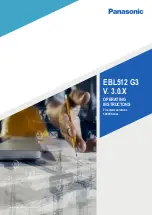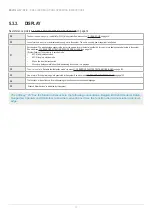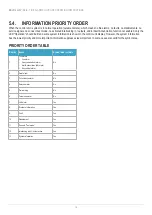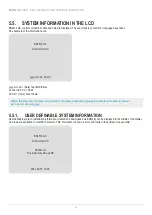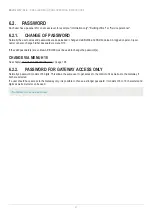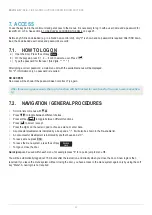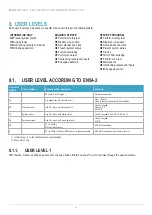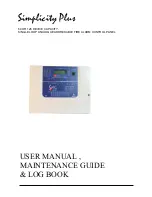
EBL512 G3 V. 3.0.X
- FIRE ALARM SOLUTIONS OPERATING INSTRUCTIONS
8
2. ABBREVIATIONS
PFSEU AB
Panasonic Fire & Security Europe AB
Alarm points
Units, which can generate a fire alarm (in the control unit), i.e. analog detectors (sensors),
conventional detectors, manual call points, etc.
Smoke detector
Analog or conventional photoelectric (optical) smoke detector
Sensor
Sensor = Analog detector
Analog detector
Contains an A/D-converter. The Control Unit pick up the digital values ("sensor values")
for each detector individually. All evaluations and "decisions" are then made by alarm
algorithms in the C.U. As from version 2.0.x the latest detector generation (440x) can be
used in "Advanced mode", i.e. the alarm algorithms are in the detector instead. Analog
detectors are addressable – an address setting tool 4414 is used for the detector's COM
loop address and mode settings.
An analog detector has to be plugged in an Analog Sensor Base (ASB).
Analog Sensor Base (ASB)
An analog detector is plugged in an ASB, which is connected to a COM loop (see below).
Conventional detector
A detector with only two statuses, i.e. normal or fire alarm. The detector has a "closing
contact" and a series alarm resistor. Normally plugged in a conventional detector base
CDB (see below), which is connected to a conventional zone line input. Some types (e.g.
water proof types) are connected directly on zone line. An end-of-line device has to be
connected in the last unit on the zone line.
Conventional Detector Base (CDB)
A conventional detector is plugged in a CDB, connected to a conventional zone line input.
Addressable
A unit with a built-in address device. Each unit is individually identified, handled and indicat
-
ed in the Control Unit. (The unit can be an I/O unit with a zone line input, to which one or
more conventional "alarm points" can be connected.)
Conventional zone line input / External line
Input intended for one or more conventional alarm points. End-of-line device in the last
alarm point on the line.
Output unit
Addressable unit with programmable control outputs. Connected to a COM loop (see
below).
Output / Control output
Defined or programmable function. Relay output or voltage output (supervised / monitored
or not), in the Control Unit or an output unit connected on a COM loop.
Display unit (D.U.)
Addressable unit (RS485 line) for fire alarm presentation (incl. user definable alarm text),
alert annunciation, etc.
COM loop
Loop = a cable, twisted pair, to which all the addressable units can be connected. Starts in
the Control Unit and returns back to the C.U.
Control Unit / C.U. / C.I.E.
Control Unit = Control and Indicating Equipment (c.i.e.) = Unit to which the alarm points are
connected (via e.g. a COM loop). Indicates fire alarm, fault condition, etc. Fire Brigade
Panel & Control Panel, i.e. the front, included or not included. Printer included or not
included.
Control panel (CP)
A part of the control unit (a part of the front), intended for the building occupier / officer,
service personnel, etc., to "communicate" with the Control Unit / the System.
System / Installation
One control unit or several control units connected via a network (co-operating control
units).
Network with network board 5040
A network with network board 5040 is a redundant network. To connect a control unit to a
network, two network board 5040 has to be plugged in each control unit.
All network programming (configuration) is made in EBLWin

